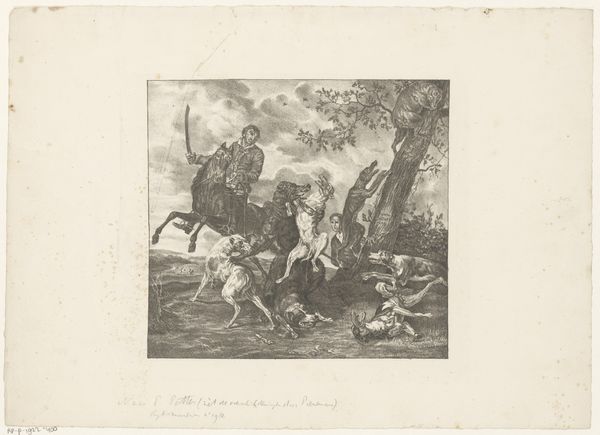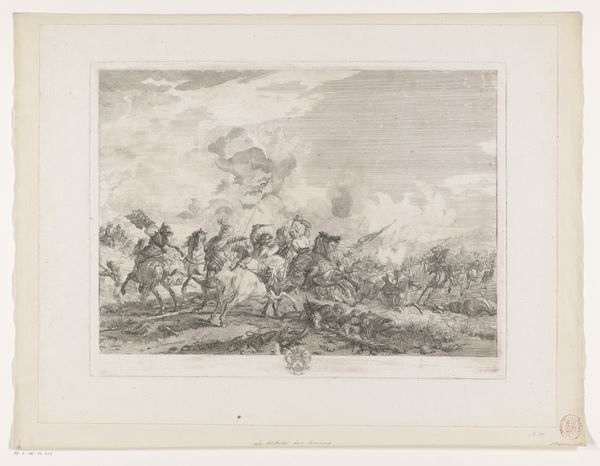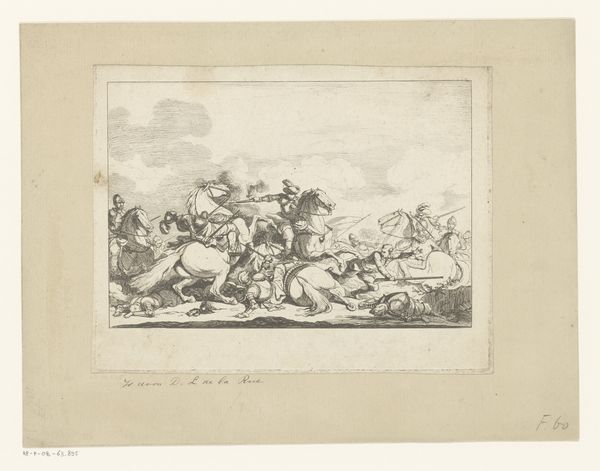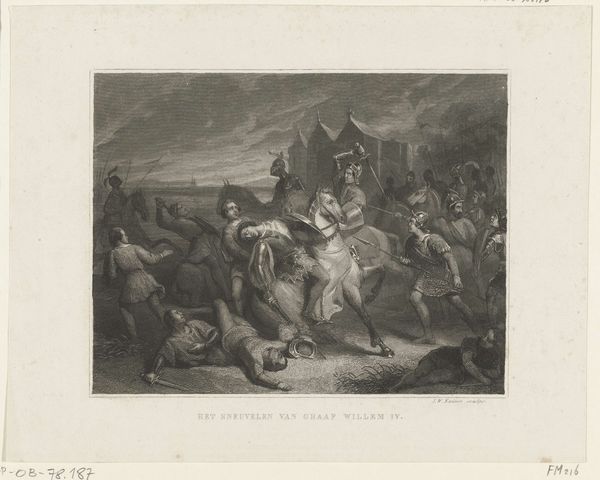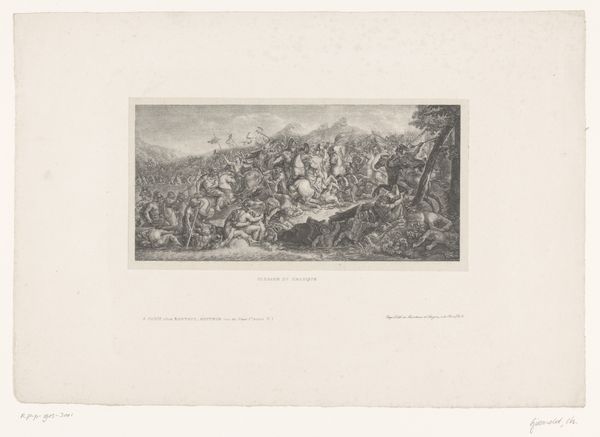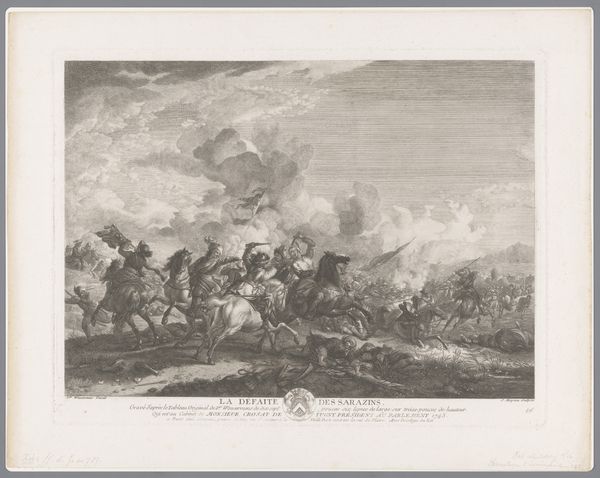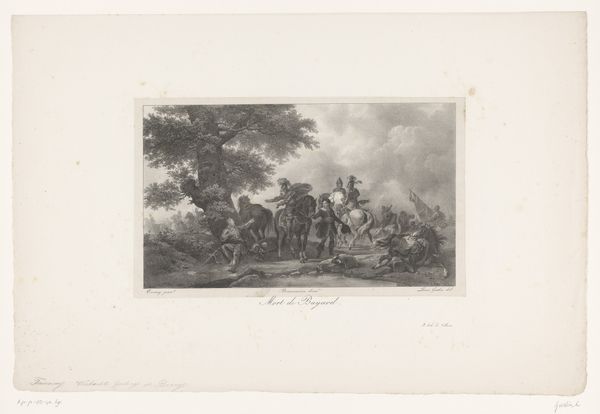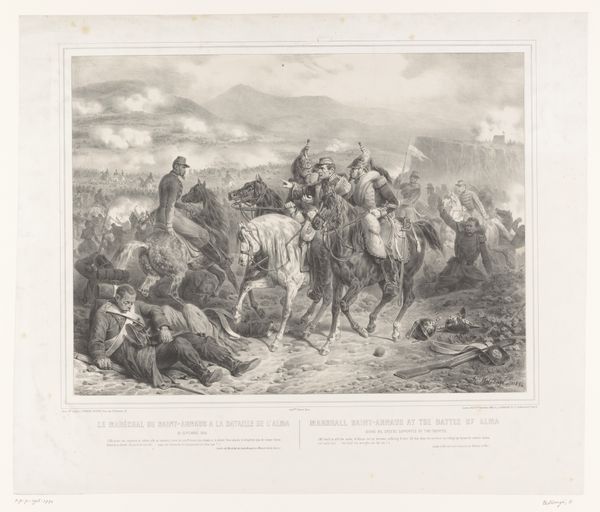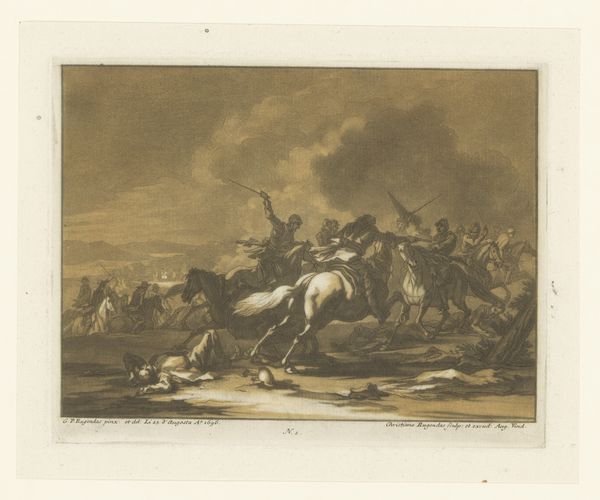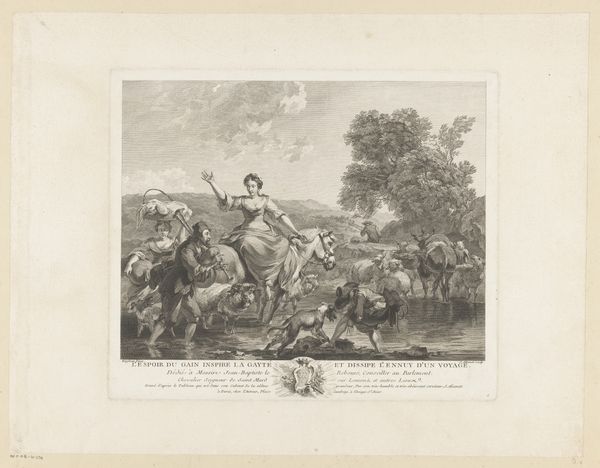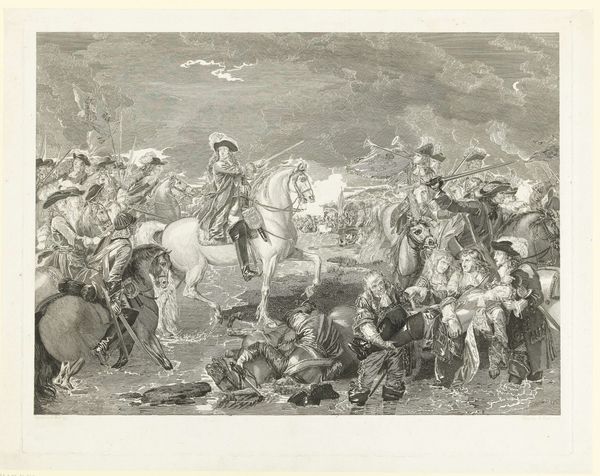
drawing, print, etching, engraving
#
pencil drawn
#
drawing
# print
#
etching
#
landscape
#
figuration
#
line
#
history-painting
#
engraving
Dimensions: height 207 mm, width 348 mm
Copyright: Rijks Museum: Open Domain
Editor: Here we have Peter von Halm's "Ruitergevecht," an etching and engraving print made sometime between 1864 and 1923. It depicts a cavalry battle scene with frantic energy. There's a definite chaos to the composition, with a lot of dark and light interplay created with lines and dots, particularly with how it renders the cloud of dust hanging over the battle. What do you see in this piece, considered in its time? Curator: The turbulent scene certainly grabs attention, doesn’t it? To fully appreciate "Ruitergevecht," we need to consider the socio-political context. The latter half of the 19th century was a period of intense nationalism and militarism across Europe, and history painting experienced a resurgence. How might the artist, living amidst rising Prussian influence and the decline of old empires, have been shaping collective memory? Editor: It’s interesting you mention that. The title itself translates to “horse fight,” and the term "history painting" makes me think of national myths or narratives. But are there cues to specify *which* battle, or even *whose* perspective is being portrayed here? Curator: Precisely! Without explicit markers of allegiance, like specific uniforms or flags, the print avoids becoming propaganda for any particular nation. Instead, von Halm presents a generalized image of conflict, perhaps inviting viewers to contemplate the universal aspects of war - its violence, its drama, and, potentially, its futility, despite what he might have felt himself, of course. He allows an avenue of discourse around how it might affect society. What impression do you get from that? Editor: I think removing overt nationalistic symbols adds complexity, pushing the audience to question why we memorialize specific fights and who gets to tell the stories. Von Halm definitely makes me think about the narratives we perpetuate and the lens through which they're shared with others. Curator: Absolutely. By sidestepping blatant jingoism, "Ruitergevecht" achieves a more nuanced and, arguably, more potent commentary on conflict, power, and our own historical reception of them. Editor: This piece definitely encourages a closer look at what stories we collectively choose to elevate in society and who does that choosing, especially within public institutions like museums!
Comments
No comments
Be the first to comment and join the conversation on the ultimate creative platform.
